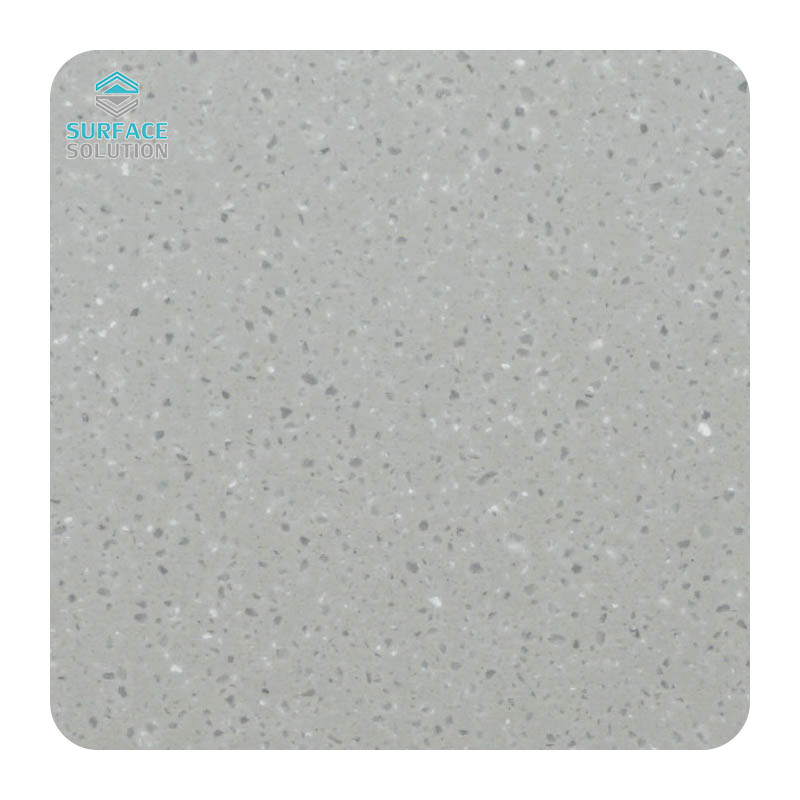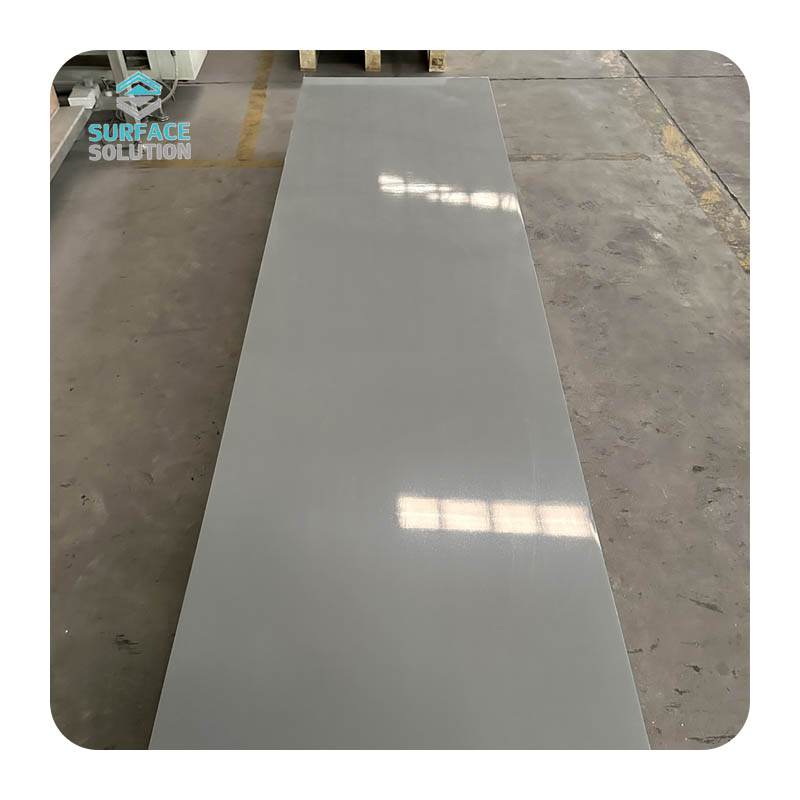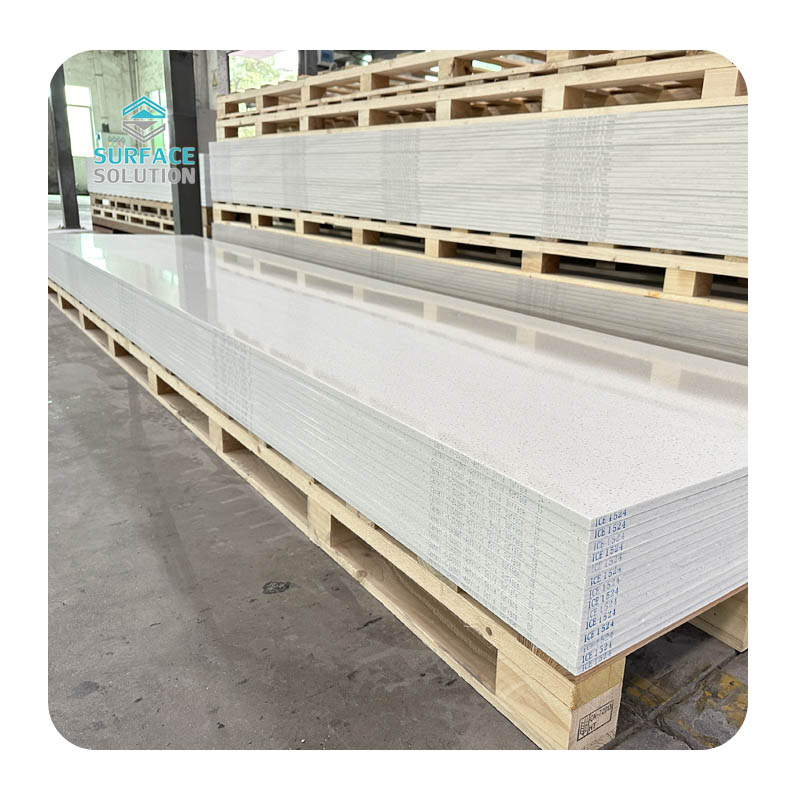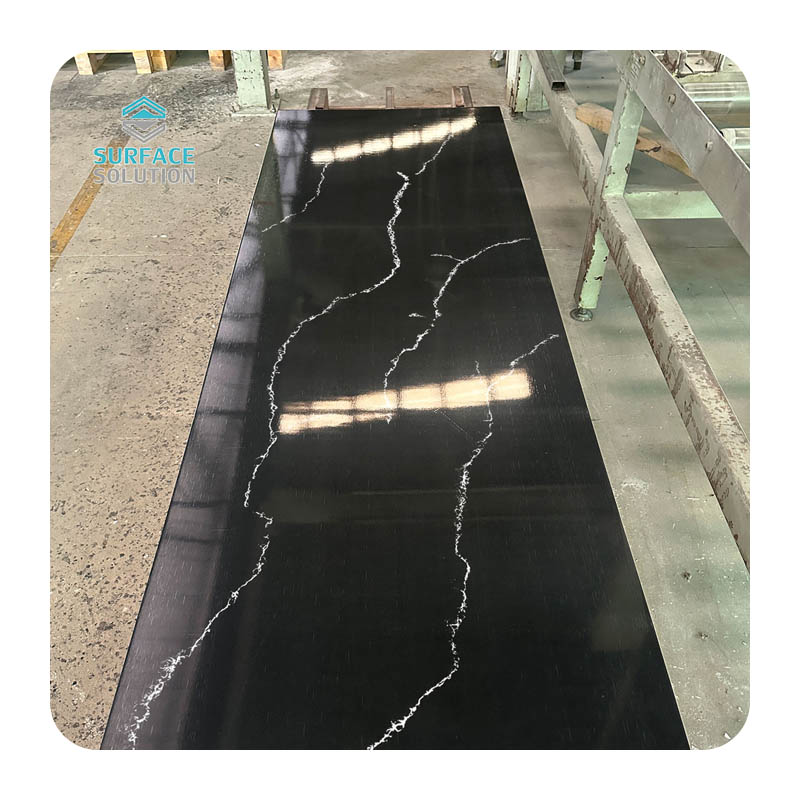In an era where sustainability shapes every corner of home design, choosing countertops has evolved beyond aesthetics and durability—it now hinges on environmental impact.
Solid surface counters, prized for their seamless look and versatility, are no exception. Today, a growing array of eco-friendly options marries functionality with planet-conscious practices, from recycled materials to renewable resources. This guide explores the most promising sustainable solid surface counters, their benefits, and how to identify truly green choices.
Traditional
acrylic solid surfaces rely on petroleum-based resins, but
recycled acrylic variants flip the script by repurposing waste. These materials are crafted from post-industrial scraps (leftover fabrication trimmings) or post-consumer waste (old countertops, acrylic sheets, or even plastic bottles), diverting debris from landfills and reducing reliance on virgin plastics.
How they work: Recycled acrylic is ground into pellets, blended with mineral fillers (like alumina trihydrate) and a small amount of new resin to bind the mixture, then molded into sheets. Many options contain 30–60% recycled content.
Eco-benefits: Cuts down on plastic waste, lowers carbon emissions by reducing the need for raw material extraction, and often uses low-VOC (volatile organic compound) production processes.
Performance: Retains key acrylic perks—non-porous (resists stains and bacteria), repairable (scratches can be sanded out), and heat-resistant enough for kitchen use.
Brands to note: Avonite Recycled Series (40–50% recycled content) and Tarkett EcoSolid (focuses on post-consumer waste and low-emission manufacturing).

Moving beyond recycled materials, bio-based solid surfaces replace petroleum-derived resins with plant-based alternatives. These resins are made from renewable resources like soybean oil, corn starch, or sugarcane, slashing the carbon footprint associated with fossil fuel use.
Composition: Typically blends bio-resins with natural fillers (e.g., wood fibers, bamboo dust, or agricultural byproducts like rice hulls) to create a durable, solid surface.
Eco-credentials: Reduces reliance on non-renewable resources, lowers greenhouse gas emissions during production, and often biodegrades at the end of its lifecycle (unlike traditional plastics).
Use cases: Ideal for kitchens and bathrooms—they resist moisture, are easy to clean, and offer a warm, natural aesthetic (think soft woodgrain or earthy tones).
Example: BioSolid Surface by Greenleaf (70% plant-based resin, with bamboo fiber filler) and Teragren’s BioComposite (uses sugarcane-derived resin and recycled wood).
For those seeking a "close to nature" option, natural mineral composites combine earth-derived minerals with organic fibers, avoiding synthetic resins entirely. These surfaces lean into raw, sustainable ingredients while maintaining structural strength.
Key ingredients: Common formulations include gypsum or limestone (abundant, low-impact minerals) bound with cellulose fibers (from recycled paper, hemp, or flax) and natural adhesives (like starch or plant-based binders).
Sustainability highlights: Minimal processing (reduces energy use), no toxic chemicals, and fully recyclable or compostable. Many are also carbon-negative, as the minerals absorb CO₂ during curing.
Pros & cons: Heat-resistant and scratch-resistant, but slightly porous (may need periodic sealing). Their matte, textured finish adds rustic charm to modern or farmhouse-style kitchens.
Notable brand: PaperStone (made from 100% recycled paper and natural resins, with a sleek, stone-like look) and Marmoleum Solid Surface (combines linseed oil, wood flour, and limestone).
A fusion of industrial waste and natural strength, recycled glass-concrete composites transform discarded glass into durable, eye-catching counters. This option tackles two environmental issues: glass waste (which is non-biodegradable) and the high carbon footprint of traditional concrete.
How it’s made: Crushed recycled glass (from bottles, windows, or manufacturing scrap) is mixed with low-carbon concrete (often using fly ash, a byproduct of coal power, to replace cement) and natural pigments. The result is a speckled, glossy surface with unique visual texture.
Eco-impact: Diverts glass from landfills (glass takes over 1 million years to decompose), reduces cement use (cement production accounts for 8% of global CO₂ emissions), and uses local materials to cut transportation emissions.
Performance: Heat and scratch-resistant, making it ideal for busy kitchens. The porous nature means it requires sealing, but this also allows for a patina that develops over time, enhancing its character.
Brands: Vetrazzo (uses 85% recycled glass) and IceStone (blends recycled glass with concrete and is Cradle to Cradle Certified).

Not all "green" labels are created equal. To avoid greenwashing, look for third-party certifications:
Cradle to Cradle Certified: Ensures the product is designed for circularity (recyclable or biodegradable) and uses safe, renewable materials.
Greenguard Gold: Certifies low chemical emissions, critical for indoor air quality.
FSC (Forest Stewardship Council): Relevant for wood or fiber-based composites, ensuring sustainable sourcing.
Recycled Content Verified: Programs like UL’s Environmental Claim Validation confirm the percentage of recycled materials.
Your choice depends on your space, budget, and priorities:
For high-moisture areas (bathrooms), opt for non-porous recycled acrylic or bio-based resins (no sealing needed).
For a rustic, low-maintenance kitchen, natural mineral composites or recycled glass-concrete work well (with occasional sealing).
For strict carbon footprint reduction, prioritize bio-based resins (renewable) or recycled glass blends (waste reduction).
Eco-friendly solid surface counters prove that sustainability and style can coexist. From recycled acrylic that gives new life to waste, to bio-based resins rooted in renewable resources, these options let homeowners reduce their environmental impact without sacrificing durability or design. By prioritizing third-party certifications and aligning materials with your space’s needs, you can craft a kitchen or bathroom that’s as kind to the planet as it is functional and beautiful. As innovation advances, the future of solid surface counters will only grow greener—making sustainable choices easier than ever.



 What Are Solid Surface Countertops? A Complete OverviewIn kitchen and bathroom design, solid surface countertops stand out as a versatile choice, balancing functionality, aesthetics, and durability. Unlike natural stone (granite, marble) or synthetic quartz, they offer unique benefits—but what exact
What Are Solid Surface Countertops? A Complete OverviewIn kitchen and bathroom design, solid surface countertops stand out as a versatile choice, balancing functionality, aesthetics, and durability. Unlike natural stone (granite, marble) or synthetic quartz, they offer unique benefits—but what exact A Comprehensive Guide to Cleaning Solid Surface CountertopsSolid surface countertops, such as surface solution, Staron, or Swanstone, have become a popular choice for modern kitchens and bathrooms due to their durability, seamless design, and resistance to stains. Unlike natural stone like granite or marble,
A Comprehensive Guide to Cleaning Solid Surface CountertopsSolid surface countertops, such as surface solution, Staron, or Swanstone, have become a popular choice for modern kitchens and bathrooms due to their durability, seamless design, and resistance to stains. Unlike natural stone like granite or marble, What Is Solid Surface Material? A Complete GuideIn the world of interior design and home renovation, "solid surface material" is a term frequently heard—but what exactly is it? Unlike natural materials mined from the earth or rigid synthetic alternatives, solid surface is a engineered man-made mater
What Is Solid Surface Material? A Complete GuideIn the world of interior design and home renovation, "solid surface material" is a term frequently heard—but what exactly is it? Unlike natural materials mined from the earth or rigid synthetic alternatives, solid surface is a engineered man-made mater What Are Solid Surface Countertops Made Of? A Comprehensive BreakdownSolid surface countertops have become a popular choice in modern kitchens and bathrooms, celebrated for their seamless appearance, durability, and versatility. Unlike natural stone (such as granite or marble) or ceramic tiles, soli
What Are Solid Surface Countertops Made Of? A Comprehensive BreakdownSolid surface countertops have become a popular choice in modern kitchens and bathrooms, celebrated for their seamless appearance, durability, and versatility. Unlike natural stone (such as granite or marble) or ceramic tiles, soli

















